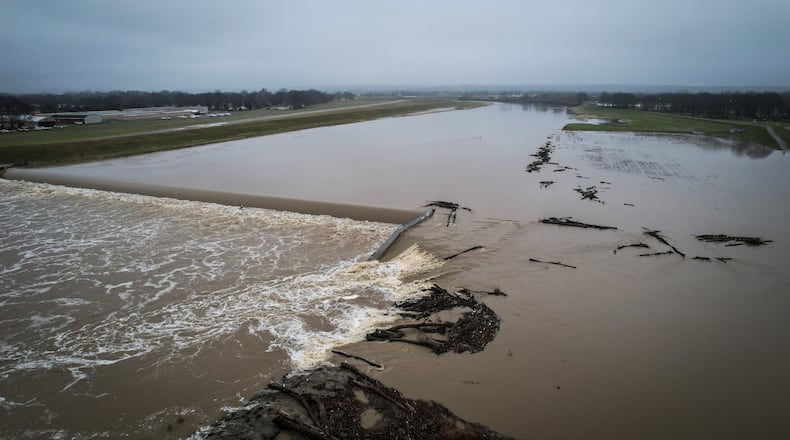John Anderson, consulting architect for Colorado-based McLaughlin Whitewater Design Group, experts in developing whitewater parks and river surfing projects nationwide, said about 60 whitewater parks nationwide are either built or under construction.
Whitewater parks also are geared toward encouraging workforce attraction and retention, improving quality of life and enhancing a community’s image, Anderson said.
They are also catalysts for economic development, as evidenced by numerous successful projects nationwide, including Denver, Colorado; South Bend, Indiana; Charles City, Iowa, and Manchester, Iowa, he said. He cited the example of Pittsburgh, Pennsylvania, which uses messaging that depicts kayaking and other adventure sports in the surrounding area.
“They’re trying to basically lure an educated workforce to their community with outdoor recreation,” Anderson said.
A whitewater park that opened in Columbus, Georgia, in 2014 is linked to $74 million in capital investment including residential, retail, and boutique hotels, Anderson said. It has since spawned 42 new businesses, several new university extensions, $24 million in gross revenues and 400 new jobs.
Whitewater parks are used not only by whitewater competitions, but also by adults and youth as a recreational activity for kayaking, canoeing, paddle-boarding and more. However, non-boaters comprise the dominant user group at 90%, Anderson said.
“We would like for this park to be a place where you can bring your lunch and just sit on the shore and enjoy yourself,” he said.
Anderson garnered input from stakeholders and area residents following a 13-minute presentation at West Carrollton High School on Monday. He said preliminary design could start this fall with permitting and final design to take place in 2023. Construction could launch toward the end of that year or the beginning of 2024 and wrap up by summer 2025.
He was scheduled to discuss development of the area Tuesday evening at city council’s regularly scheduled meeting. That forum was slated to include a vote by council to enter a development services agreement with Dillin LLC and Woodard Development. That would be for the purpose of creating a river district along the Great Miami River at the Interstate 75 West Carrollton interchange that would include more than $70 million in planned private sector development.
The city has been working on developing the area, including the proposed $7.5 million whitewater project, since 2008, said City Manager Brad Townsend.
“We just now have the opportunity to put all the pieces together,” he said.
Mike Lucking, West Carrollton’s economic development director, said the whitewater park would not require any increase in taxes for West Carrollton residents and instead would be funded via a Tax Increment Finance District created two years ago, plus federal, state and local grants.
Lucking said the project would be designed to be a hub of activity and could be “transformative” for the city.
“We could have sold it many times over, but we make sure that there is something that is unique and sustainable and something this city can be proud of,” Lucking said.
Rebecca Lucas, who has lived in West Carrollton since 1960, said the whitewater park project could be a viable economic tool for the city and an enjoyable recreation option for its residents. She said Monday’s presentation was “the right first step,” and she is proud that city officials have “stuck with the plan” and not taken the easy way out.
“They’ve waited until the time is ripe and then seized that moment, and this seems to be it —with the development of the river upstream and the development of the river downstream, this can be a piece right in the middle that can just put it right on the map,” she said.
About the Author

